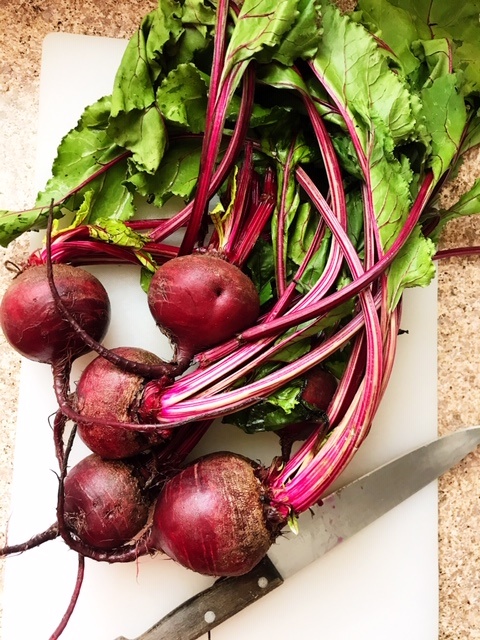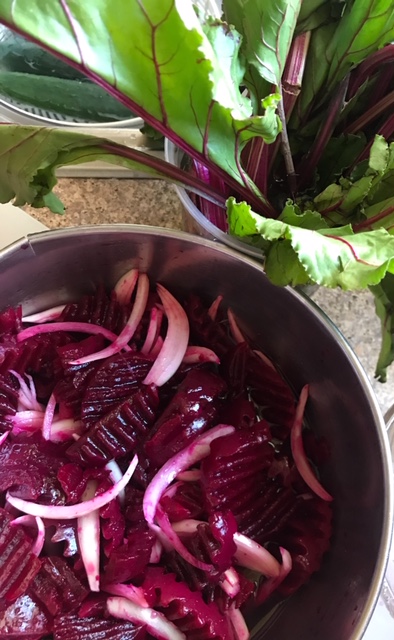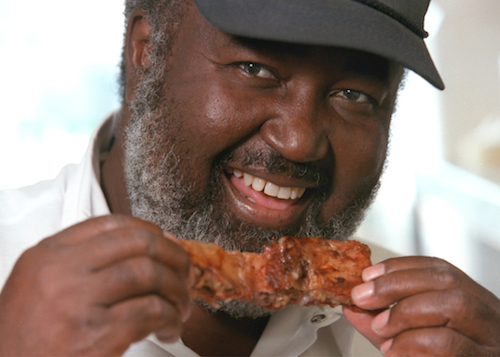Eat Beets to Boost Health
31 Mar
We’ve had one helluva month! And our current situation of sheltering in place, is unique for all of us. Regardless of what goes on in the nation, self-care is essential and that includes making wise choices on what we eat. According to research from the Centers for Disease Control and Prevention (CDC) only one out of ten Americans eat enough fruits and vegetables.
Beets are one of the best options to add to your diet; they prefer the cooler weather of Spring and Fall; however, you can find them just about year-round. Beets have a meaty texture and can be found in colors ranging from golden yellow to deep purple. Beets or beetroot are considered a Superfood which is high in nutrients, antioxidants and anti-inflammatory compounds.

Beets plus their leafy greens are rich in vitamins and minerals such as potassium, magnesium, phosphorus, iron, beta-carotene, folic acid and vitamins A, B and C. Specifically, the bulb is the source of B vitamins as well as the potassium, magnesium, iron and manganese. The top leafy greens provide carotenoid and flavonoid antioxidants and vitamins C and A. Big bonus—the greens on beets provide more iron than spinach! Betaine, a nutrient made from the B-complex vitamin choline, is also a nutrient in beets.
Benefits of adding beets to the diet include that they are high in fiber, low in calories, contain nitrates and pigments that may help lower blood pressure and improve athletic performance. Though beets contain nitrates, through a chain reaction, your body changes nitrates into nitric oxide, which helps with blood flow and blood pressure. They may also support brain and digestive health, and have some anti-cancer properties.
When choosing fresh beets opt for small to medium beets with firm, smooth skin and no soft spots or punctures. Those with stems and leaves still attached are best. The leaves should be green and fresh-looking.
You can prepare beets by roasting or boiling them. Most often I boil them until they are tender and the skins slide off easily after cooking. Roasted beets can be served as a side-dish, pickled and served in salads, or as a condiment. Raw beets can also be shredded and added to salads. The green tops can be torn into bite-size pieces and added to salads, stir-fry dishes or sautéed in olive oil with minced garlic and onion slices.
If beets are a new addition to your menu, try preparing them a couple of different ways. I’m sure you’ll agree that one of these serving options warrants a place on your list of best foods to eat often.

Pickled Beets
2-1/2- 3 pounds fresh beets
1 medium onion, thinly sliced
1 cup vinegar
1 cup sugar
1-2 teaspoons salt
1/8 teaspoon ground cloves or 2 to 3 whole cloves
Clean beets with vegetable brush in cool water. Rinse and set aside. Cut beet tops from beets leaving approximately 1-inch of stem on each beet. Place in 4-quart Dutch oven and cover with water. Bring beets to a boil; reduce heat and simmer 1-1/2 hours or until tender. Remove from heat and place in cold water. Gently peel and discard skins from beets. Slice beets.
Layer beets and onion in 2-quart non-reactive* bowl. Combine remaining ingredients and pour over beets and onions; mix lightly. Cover and chill several hours or overnight.
YIELD: Approximately 8 servings.
NOTE: Nonreactive Cookware made from anodized aluminum, enameled cast iron, stainless steel, or with a nonstick finish that does not react with the chemicals in certain acidic foods such as tomatoes, vinegar, fruit and sauces made with wine.




No comments yet